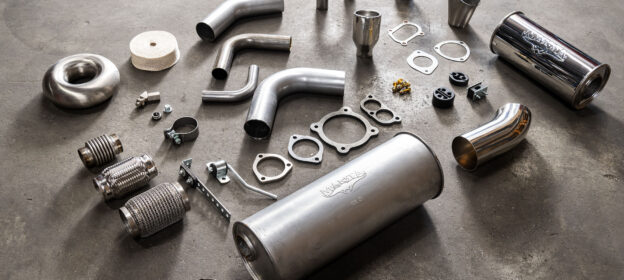
Understanding the Functionality of Exhaust System Parts
Your car exhaust system has the ability to increase your car’s performance, improve sound and can even reduce your fuel expenses. It can be easy to think of your exhaust as one unit, but in reality, an exhaust system is made up of several parts, each performing a specific role – from the exhaust manifold all the way to the tail.
We’ve come a long way from the early days of motorised vehicles, when exhaust systems were just a set of welded pipes that guided gases away from the engine. Since the 1960s, when the first air-purification device for exhausts was invented, advancements in technology have created more efficient, powerful and less-polluting car exhaust systems. Modern exhausts are much more sophisticated systems – capable of reducing harmful emissions and controlling noise output. Here’s a look at all the components that make up your car exhaust system.
Exhaust/turbo manifold
The exhaust or turbo manifold is the first part in a car exhaust system. It’s made up of several cast iron or steel tubes that attach to the engine and work like a funnel to direct the gas produced by each cylinder to a single pipe that flows on to the next stage of the exhaust system. While turbo manifolds aren’t usually added to, on naturally aspirated or supercharged vehicles, the exhaust manifold can usually be upgraded with a set of high flow extractor or headers for improved exhaust gas scavenging – leading to improved performance.
Catalytic converter or extractors
Engines produce dangerous gases in their emissions: carbon monoxide, hydrocarbons and nitrogen oxides. The catalytic converter’s job is to convert these toxic gases created by the engine into less harmful emissions (nitrogen, carbon dioxide and water) before they leave the exhaust system. The name comes from the word catalyst, which is a term for the thin layer of metals – platinum, palladium and rhodium – that speeds up the chemical reaction inside the converter. Exhaust systems can have multiple catalytic converters, with as many as four in one system.
Oxygen sensor
Oxygen sensors, also known as O2 sensors, measure the amount of oxygen present in the gases coming from the engine. In modern cars, these two sensors are usually located before (upstream) and after (downstream) the catalytic converter. The engine’s computer, known as the powertrain control module (PCM) uses information from the oxygen sensors to regulate the engine’s air-fuel ratio. Without an oxygen sensor, the car can sound rough, accelerate slowly and stall.
Diesel Particulate Filter (DPF)
Most diesel vehicles built after 2015 have an additional part called a Diesel Particulate Filter (DPF). As diesel engines can produce an excess of soot and ash, a DPF is used to trap these particles before they can be released into the atmosphere. As particles build up in the filter, the DPF regenerates – essentially self-cleaning by periodically burning off the collected soot and ash. DPF regeneration works most efficiently at high speeds and long distances. Blocked filters can be caused by short trips at low speeds, which doesn’t provide enough time (between 5 to 10 minutes) for the DPF to regenerate.
Muffler
The primary purpose of a muffler is to reduce the noise created by the engine combusting. Mufflers work to reduce noise by either absorbing sound waves or cancelling them out. In mufflers designed to cancel sound waves (reactive mufflers), gas is passed through a specially designed set of tubes and holes. By doing so, the muffler provides a space for sound waves to bounce around, creating opposing waves that interfere with each other – this process can lead to a reduction in flow and therefore performance. In mufflers designed to absorb sound (also called absorptive silencers), the gas passed through a tube surrounded by porous material like fiberglass, which converts sound energy into heat. We make sure that all mufflers used in our exhaust systems are high flow, absorptive mufflers for maximum performance.
Exhaust pipes
Exhaust pipes connect all the different parts of an exhaust system together. To protect from rust and corrosion, these pipes are generally made of steel, sometimes coated in an aluminium alloy for further protection. Exhaust pipes provide a path for emissions to travel through to move from the front of a car, where the engine is, to the back, where it can be expelled.
Tailpipe
The final part of your exhaust system is the tailpipe. Like a chimney guiding smoke away from a home, the tailpipe directs gases out of the exhaust system and into the atmosphere. This is the only part of the exhaust system that people can see, and so special attention is often paid to making it look as good as possible.
Getting to grips with the parts that make up a car exhaust system is the best way to understand why a performance exhaust might be the answer to your performance needs. At Manta, we’ve been Australia’s premier manufacturer of performance car exhaust systems since 1974. Find your vehicle and unleash the true power of your car today.
